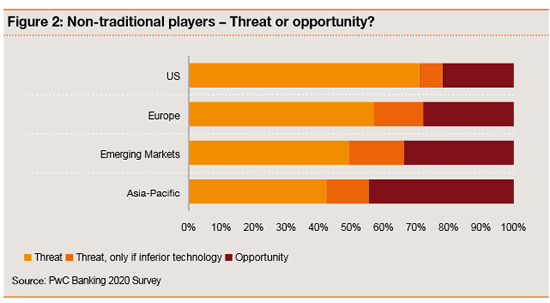The global financial services industry faces very specific challenges in a business climate that is characterized by changing regulations, economic uncertainties, evolving customer behavior and disruptive technologies and business models, leading to digital transformations.
Although each segment of the industry (insurance, retail banking, corporate banking, etc.), each region and even each financial services institute is different (and thus also has different priorities, challenges and opportunities), there are many similarities as well.
On this page we take a look at some of them and take a deeper dive into the insurance industry and retail banking.
Information challenges in an omni-channel environment
From an information/data capturing and information management perspective, common challenges include:
- Paper-based processes and in general a lot of paperwork and forms. Through digitization and intelligent information management, several gains can be realized, both from a process efficiency and a customer experience perspective. Furthermore, costs can be reduced, among others by reducing errors and their associated negative consequences.
- Legacy IT systems are often complex and negatively impact the conditions for business agility. They stand in the way of the ability to respond fast to changing market conditions and customer evolutions. While the IT infrastructure of financial service institutions is related with specific demands (security, privacy, compliance, regulations, etc.), there is a momentum for evolution, especially in the back-office.
- Disconnected information systems and flows/processes. There are still many manual processes (paperwork) that are expensive and stand in the way of developing new business. Furthermore, many processes are disconnected, as are data and information resources. The same silos also exist within an organizational context as financial service organizations often have complex and disconnected organization models.
- The financial services industry – more than many others – is confronted with empowered digital customers who want an omnichannel and omni-device access to financial services, on their terms and conditions. They also want to control their data. While many financial service institutions have nice examples of digital forms of customer interaction on the front-end, the back-office often stands in the way of reaping the fruits of a positive end-to-end positive customer experience. The huge volume of unstructured data, that comes on top of existing data, as a consequence of new channels and devices poses a challenge from a single customer view and intelligent information management (connecting the data and information that matter where and when they matter) perspective.
- The typical channel and multi-touchpoint model, built around the customer lifecycle, as it exists in many (retail) banks and insurance companies, offers plenty of opportunities to increase and improve customer interactions and operations. However, without connecting the data and intelligence, this opportunity often remains a challenge.
Digital transformation: digital disruption and the advent of non-traditional players in financial services
New competitors (e.g. FinTech players) who focus on the digital customer, along with better digital channels and information/data processes, could increasingly become a threat as the pace at which consumers adopt more of these channels and at which they use them more intensively for financial services, keeps growing.
According to the “Retail Banking 2020″ report by PwC, for instance, the majority of bankers see non-traditional players as a threat, espcially in the US and Europe. This is especially so if these non-traditional players have superior technology.

Other challenges in the financial services industry
Knowing the challenges facing the financial services industry is part of seeing other opportunities.
Deloitte categorized the main challenges in banking in three categories, which can be used for the insurance industry as well:
- Strategic challenges
- Regulatory challenges
- Operational efficiency challenges.
Although they can be categorized within one or more of these three, below are a few – pervasive – areas where evolutions and optimizations can occur:
- Digitization and digital transformation.
- Customer experience and service.
- Innovation and growth.
- Cost reduction and optimization.
- Intelligent – actionable – data.
- Integration of processes and functions.
Top image purchased under license from Shutterstock


